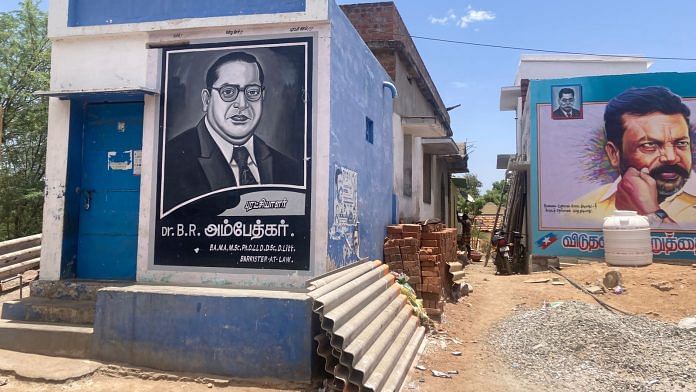Tirunelveli: Children in Tirunelveli literally wear their caste on their sleeves.
Colours are not simply colours, wrist bands aren’t just jewellery, hair ties and pottus (vermilion on forehead) are more than accessories, and billhooks aren’t just a tool to cut coconuts. They are all symbols of caste pride.
Everything is about “community,” but not in the way one would think. In this Tamil Nadu district, communities stand divided by caste and united in simmering resentment towards one another. And it begins very early in life — as early as schoolyard fights.
These fights are often dismissed as bullying, but underneath the surface lies the assertion of caste pride — and the desire to enforce it violently.
A recent case in the district’s Nanguneri town lays bare these fissures. On 9 August, a 17-year-old Dalit boy, a Paraiyar, was nearly hacked to death by three of his ‘upper’ caste classmates who had been reportedly bullying him for years. The attackers, from the Thevar community, entered his home at 10 pm as three getaway riders waited on motorcycles outside. They took turns hacking at him with one billhook, passing the weapon on after taking a swipe.
The only reason the Dalit teen is alive is because his 14-year-old sister threw herself in the fray. Her arm caught the blow aimed at her brother’s neck. Both siblings are recovering at the Tirunelveli General Hospital, where a team of plastic surgeons were flown in from Chennai to reconstruct the 17-year-old’s limbs. All seven accused — the three attackers and their accomplices, including someone who gave them water after the crime — have been arrested and are being held at a juvenile detention centre.
I told him to focus on school and graduating 12th grade. I had no idea this would happen – Vivek Raja, the boy’s cousin
The immediate trigger for the attack was a one–page complaint letter signed by the victim and his mother, written in front of the headmistress of Concordia Higher Secondary School in Valliyoor on the morning of 9 August. The letter lists everything that the accused forced the teenager to do in school over the years. No action was taken — there wasn’t enough time for it anyway. One of the accused boys’ elder brother and grandmother had done a recce of the area, and by late evening, the attackers arrived at the one-bedroom house, determined to take matters into their own hands.
Caste pride and prejudice escaped nearly a century of social justice and self-respect politics in Tamil Nadu. And the lines seem to have only solidified over time. Dalits continue to be denied entry into temples, violence continues between the dominant intermediate castes and Dalits, and Dalits continue to be sidelined for leadership roles in the state’s mainstream political parties DMK and AIADMK.
Popular movies through the ’90s and early 2000s foregrounded Thevar and Gounder pride, and songs such as Potri padadi ponne, Thevar Kaladi Manne from a hit Kamal Haasan film are still hugely popular, often used as an anthem for the community’s meetings. Street posters and wall paintings are an ode to caste groups, and community leaders proudly displayed as mascots. School children are absorbing these symbols quite early — and are unafraid to display them too. Tirunelveli’s neighbouring districts, Thoothukudi and Tenkasi, are hotbeds of casteism and violence between OBCs and Dalits as well, with at least one incident among school children taking place every year. And it’s a two-way street — perpetrators belong to both OBC and SC groups. Barely a week after the Nanguneri incident, a Dalit boy in Thoothukudi was beaten up by ten of his ‘upper‘ caste classmates.
Sources in the police say that one of the attackers in Nanguneri wrote “Thevar Devam” — Thevar God — on the floor of his detention cell with chalk. The victim boy’s lawyer, Madasamy SP, likened this crime to a gangrape — in that every attacker wanted to have his share.
“Understanding the audacity of this particular crime is important,” said Dr Samuel Asir Raj, head of Manonmaniam Sundaranar University’s sociology department and a member of the People’s Union for Civil Liberties (PUCL) team that put together a report on the crime. “This was not normal violence. It’s structural violence. And it found its release through children.”
Children wear coloured wristbands and hair ribbons to indicate their caste — a knotted red and yellow for Thevars, blue and green for Nadars, yellow and blue for Yadavs, who are all socially and politically powerful communities that come under the Most Backward Classes (MBCs) category. Among Dalits, it’s red and green for Pallars, red and blue for Arundathiyars, and blue for Paraiyars. The practice of wearing such caste identifiers in schools has been banned by the Tamil Nadu government, but Tirunelveli district has caste symbols painted everywhere. From electric poles to wall posters and street hoardings, the residents of Tirunelveli proudly show off their caste pride, regardless of the community they belong to.
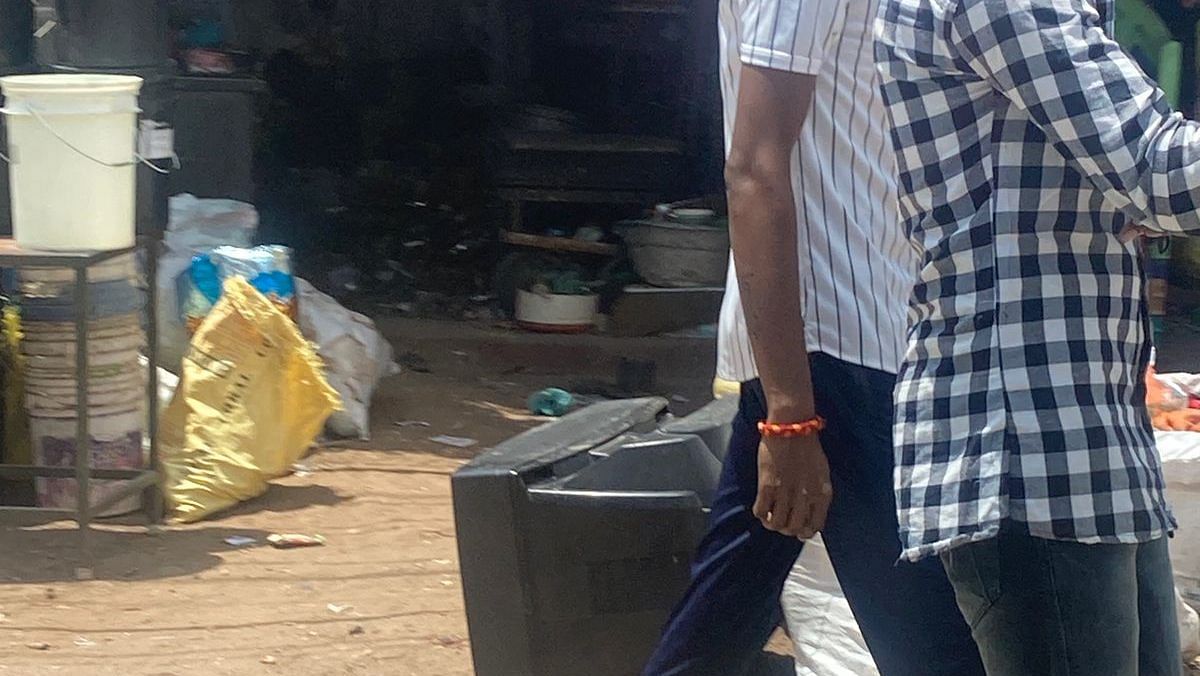
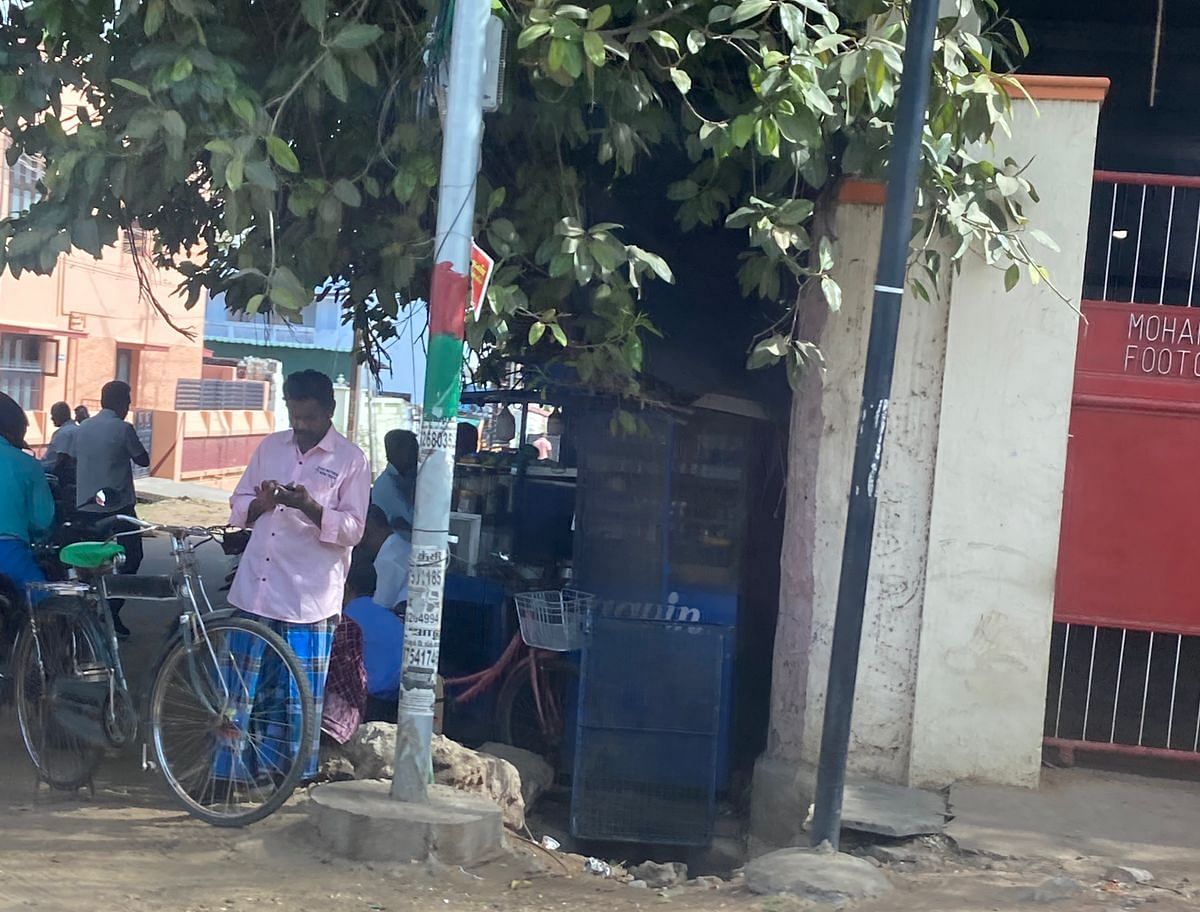
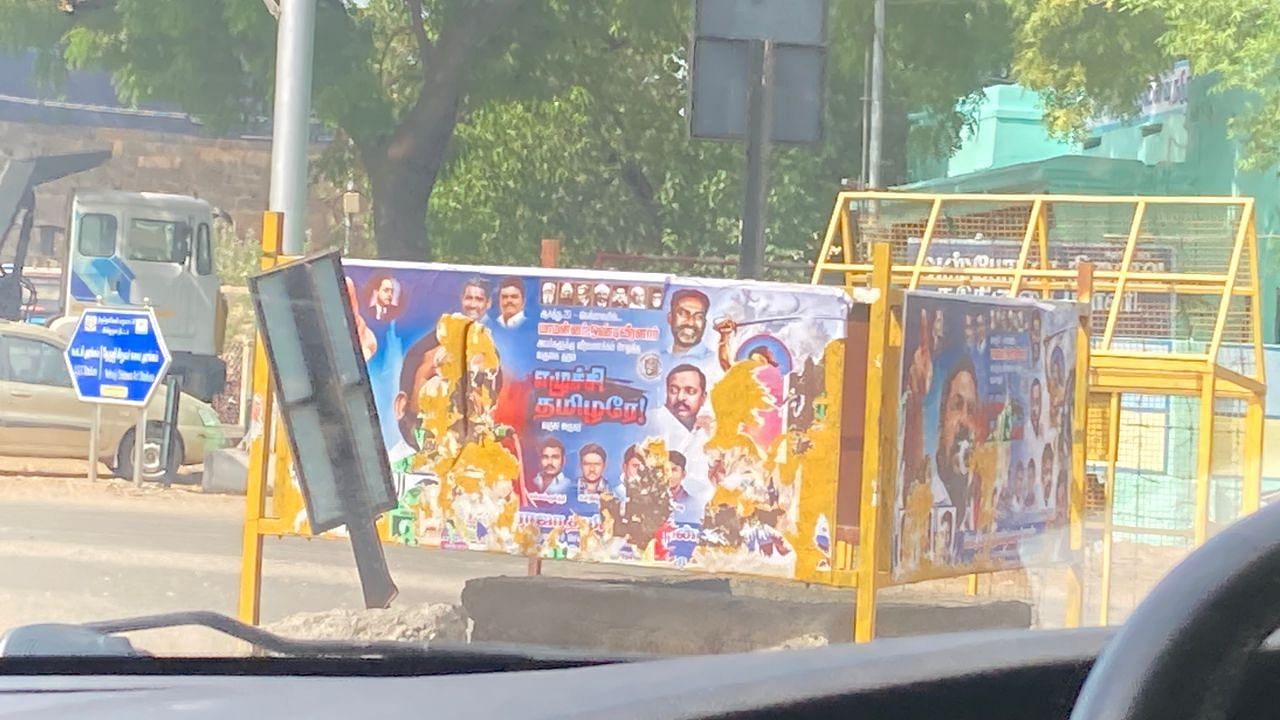
The administration is acutely aware of the simmering tension. “It’s a tough task before us,” said a senior government official in the district administration. “Social change isn’t happening at the speed at which education and economic change is. We have to bridge that gap.”
Caste crime masquerading as bullying
The night before the attack, on 8 August, the Dalit teen had tried to run away to Chennai to work at a resort restaurant. He knew something was coming.
But he was talked out of his plans to drop out of the school by Vivek Raja, his well-educated, English-speaking cousin who works in the railways. Raja saw him at the Nanguneri station and convinced him to return home, explaining to him the importance of graduating school. Twenty-four hours later, not only were the 17-year-old and his sister left fighting for their lives, but their 55-year-old uncle Krishnan suffered a heart attack upon seeing the mutilated children, and died.
“I told him to focus on school and graduating 12th grade. I had no idea this would happen,” Raja now says, the guilt from the consequence of his decision eating him up.
In fact, it seems no one except the victim saw the crime coming.
The teenager was being bullied by his classmates, forced to spend money on buying them snacks, letting others copy his test answers, and disrupt class by hooting and shouting — something the quiet and reticent teenager was intensely uncomfortable with.
He stopped going to school, and told his single-mother Ambikapathi about the bullying. The two went to the school and wrote a letter to the headmistress, Grace Selin Rani, who didn’t call the accused students — all of whom had skipped school that day — or inform their parents.
If this was just bullying, why is it that it was three upper caste boys who were picking on a Dalit boy? Why was no one else bullied? – Dr Raja
Around 6 pm, the elder brother and grandmother of one of the attackers arrived to check if the lime green house was indeed where the teenager lived. He came out and spoke to them, saying all he wanted was to be left alone at the school.
That, however, didn’t happen. At 10 pm, the three main accused attacked him and his sister before fleeing from the scene while panic ensued outside the house — still stained with blood.
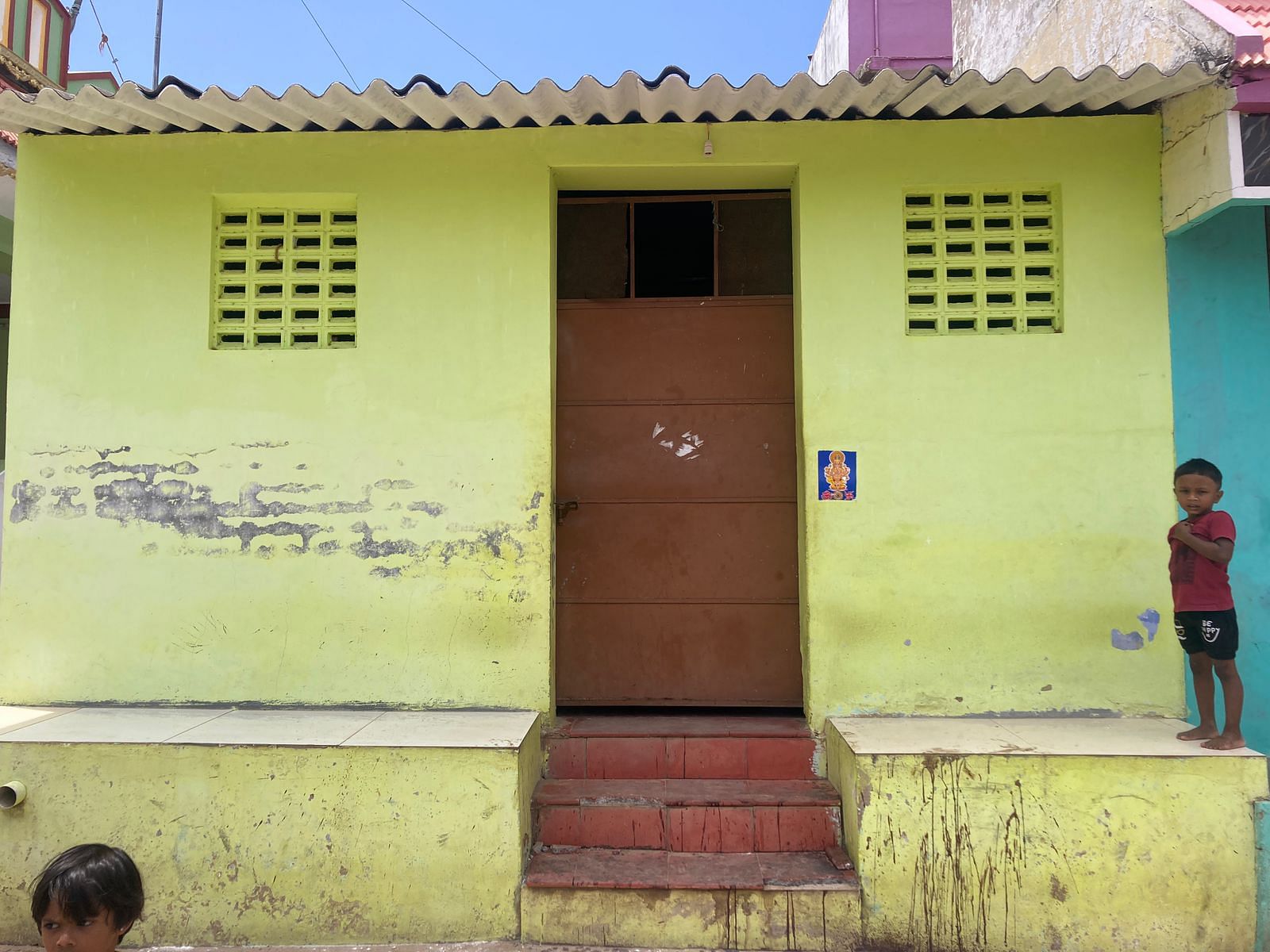
The parents of the accused have a different version. The boys were friends from the same town and travelled together to school where they shared notebooks. Their sons were either better students than the assaulted teenager or at par with him, which the school also corroborated. One of the mothers, Lakshmi, said she worked at the same school as Ambikapathi, and had even loaned her sugar and some money the previous week.
“This was just playfulness that went too far,” said Papa, the mother of the main accused, while admitting that her son committed a crime he shouldn’t have. “Now our sons’ lives are also ruined. They too need government support to come out of this.”
All the parents swore they had no idea about the conflict among their sons, and asserted that caste had nothing to do with it. The grandmother claimed she had only gone to the teenager’s home to seek forgiveness. When asked how they knew about the complaint since the headmistress hadn’t contacted them, she had no answer.
According to the testimony of Papa’s son, his mother had told him he could get an arival (billhook) from the local coconut seller. Papa denied saying this, and her husband — a member of the BJP’s local unit — said that billhooks are a common household tool.
“If this was just bullying, why is it that it was three upper caste boys who were picking on a Dalit boy? Why was no one else bullied?” asked Dr Raj. He pointed to the fact that the attacker’s family went to identify the victim’s home, outraged by the fact that a Dalit had dared to complain against upper-caste people.
The victim teenager told ThePrint that the attackers used to bully another boy — also a Dalit.
“I know these people very well,” said Ambikapathi, her eyes flashing. “But I didn’t know what my son was going through. Now my only hope is that the government takes care of him and his education.”
Her son lies immobile on the bed — his bright eyes are the only part of his body he is able to move. A team of plastic surgeons from Stanley Medical College have reconstructed his limbs. Doctors at the Tirunelveli General Hospital said that the tendons, nerves, and muscles in the hand have been reconnected but will need intensive physiotherapy to function again. Hopefully, one day the teenager would be able to hold a pen and write with it again, a doctor said.
Schools as the scene of crime
Ironically, the government-aided Concordia Higher Secondary School, managed by the Indian Evangelical Lutheran Church, has mostly Dalit teachers. Of its 31 teaching and non-teaching staff, 28 belong to the Paraiyar caste, same as the victim. The remaining three belong to Nadar caste.
The teachers knew about the caste discrimination. In 2021, students were caught writing caste names like Maravar (a subgroup of the Thevar caste) and Nadar on bathroom stalls. The school administration installed CCTV cameras across the campus — and still couldn’t figure out that the victim was being bullied.
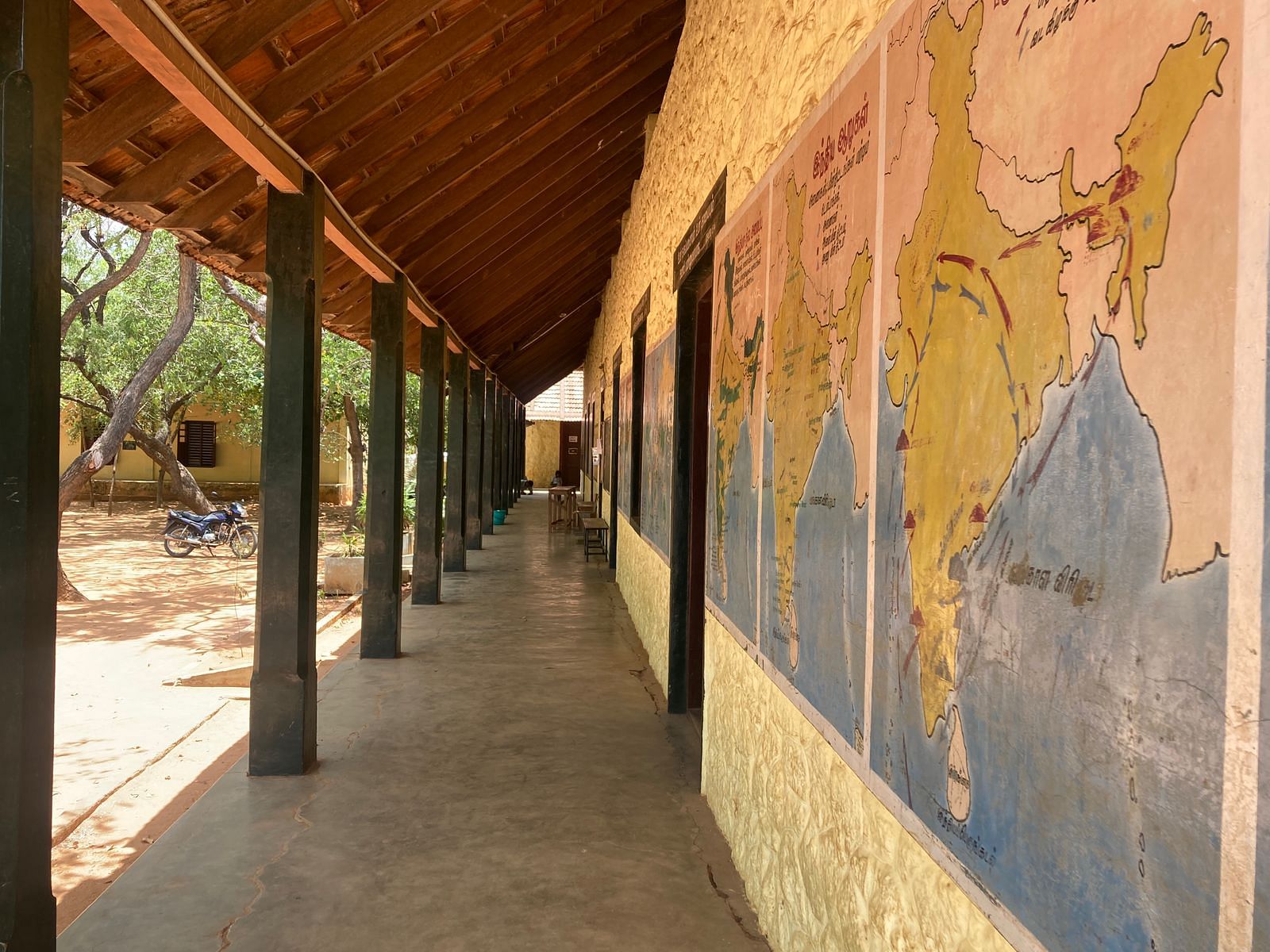
“The three accused are very good actors,” said the headmistress, making a wringing gesture with her hands. “We had no idea they had such vengeance inside them,” she added, insisting the boys had never shown their caste pride in school and the teachers never noticed such bullying on the campus. Other classmates of the victim described him as very quiet but “too obedient” and the accused as “bad boys”.
Concordia is 15 km away from Nanguneri. Of the 32 children from the town who attend the school, four are from Scheduled Caste and the rest are Thevars. Nearly everyone in Nanguneri agrees that the school is Thevar–dominated and prone to “community practices,” code for caste discrimination. Dalits in the area prefer to send their children to faraway schools to escape such discrimination.
Parents of the accused boys said they chose Concordia because it is an old Christian school with a good reputation — as opposed to the local government school — and they wanted their children to mingle with kids from other communities.
According to the headmistress, these parents never attend parent-teacher meetings at the school. The parents claim they were never invited. Had they been, they added, they would have sat across the table from Ambikapathi and tried to sort the issue out. They are angry with the school authorities, who they allege “failed” their sons and unfairly discriminated against them — even though the majority of students attending the school belong to the Thevar caste.
The parents further alleged that it was the victim teenager who bullied their sons, claiming he once locked one of the accused students in the toilet and beat him up. However, no such incident was reported to the school administration, nor do the CCTV tapes have any record of it ever happening. The state Child Welfare Committee visited the school to put together a report a week after the incident took place.
But schools and classrooms have always been a site of caste discrimination, according to writer and activist D Ravikumar, who is also the general secretary of the Viduthalai Chiruthaigal Katchi (formerly Dalit Panthers of India). He has submitted a memorandum to the DMK, listing the discrimination that Dalit students and teachers face, including students being forced to wash toilets and sit separately during midday meals, and teachers being ostracised by their dominant caste colleagues.
The VCK is led by Thirumavalavan, who belongs to the Paraiyar caste, same as the victim student. He has visited the colony in Peruntheru, where the crime happened, multiple times, and has been holding rallies in Tirunelveli highlighting the atrocity.
Tamil Nadu Chief Minister MK Stalin has also been in touch with the local people, having extended support to Ambikapathi and her family. Speaker M Appavu and Thangam Thennarasu, the finance and human resources management minister, have met the teenager at the hospital — along with Nanguneri’s Congress MLA Ruby Manoharan, who has reportedly visited the victim and his sister twice. State education minister Anbil Mahesh announced that the DMK government will bear the expenses of the victim and his sister’s schooling. BJP state president K Annamalai was present in Tirunelveli until 23 August during his ‘yatra,’ but didn’t address the Nanguneri incident.
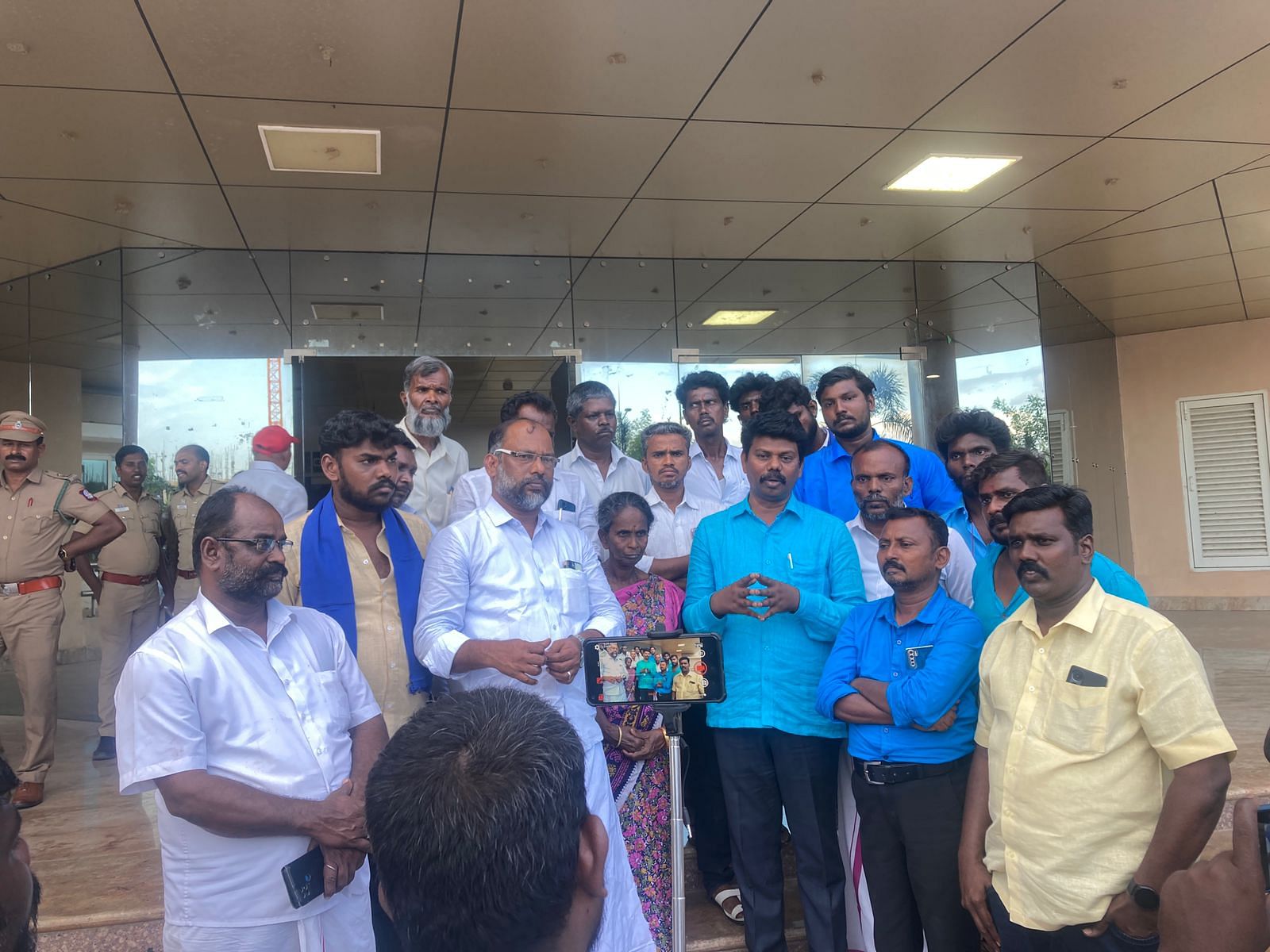
Wearing caste pride on their sleeves
What sets Tirunelveli apart from other districts in Tamil Nadu is that people here are unafraid to show pride in their caste.
“Here in Southern Tamil Nadu, many caste outfits openly show caste pride and align with others. This has trickled down from colleges to schools,” said MA Britto, director of the Tirunelveli-based NGO Vaan Muhil. “And there are implicit caste manifestations everywhere. Cases like [Nanguneri] show how explicit they can be.”
Posters, flags, wristbands, marriage announcements, paintings, electric poles, films, videos — all are stained with caste and saturated with caste pride. On 23 August, caste banners were removed from 2,322 spots in villages prone to caste violence.
Every community has their local hero. Thevars have Muthuramalinga, Puli, Veera Pandyan and, oddly enough, Subhash Chandra Bose. Paraiyars have Ambedkar and Thirumavalan. Other Scheduled Caste groups have Emmanuel Sekharan and Veeran Sundaralingam. And they’re fiercely protective of these heroes — in the past, several fights have broken out across southern Tamil Nadu when one community tried to appropriate a figure from another community.
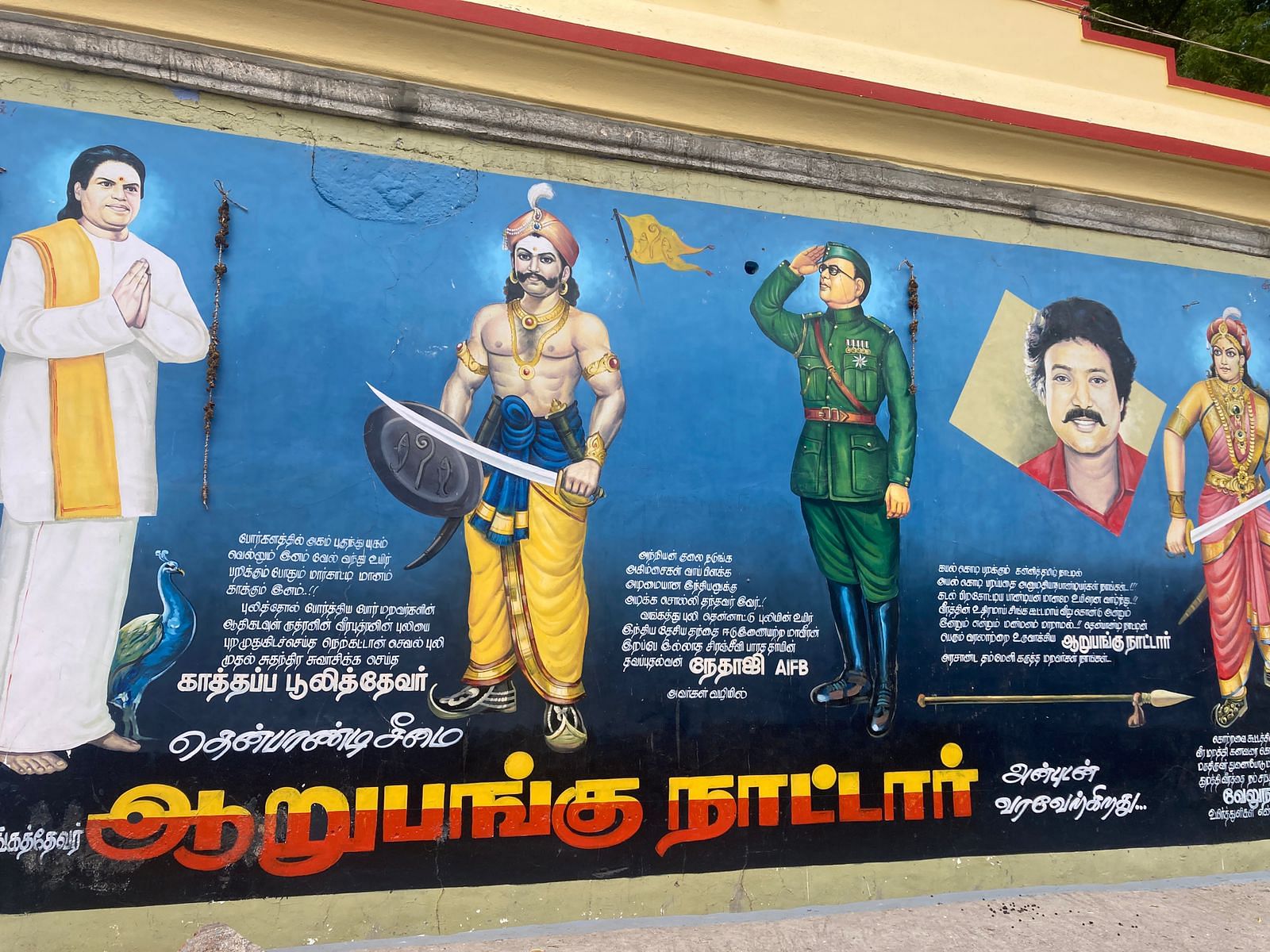
Maharaja, a lawyer and founder of Netaji Subhash Senai, a local Thevar group named after Bose, points to the recent film Maamannan as an example. The film subverts Thevar Magan, a film that holds a special place in the community’s heart. They boycotted the film Maamannan and pedestalised its villain character, played by Fahadh Faasil. His photo is now part of several posters showcasing Thevar pride.
“We are a warrior community,” said Maharaja. “We have a lengthy history of warriors including Rajaraja Chola. That community blood is inside us — I can’t deny that that aggression comes out at times. But we are also educated and many of us have risen to become collectors, doctors, business magnates, lawyers — you name it.”
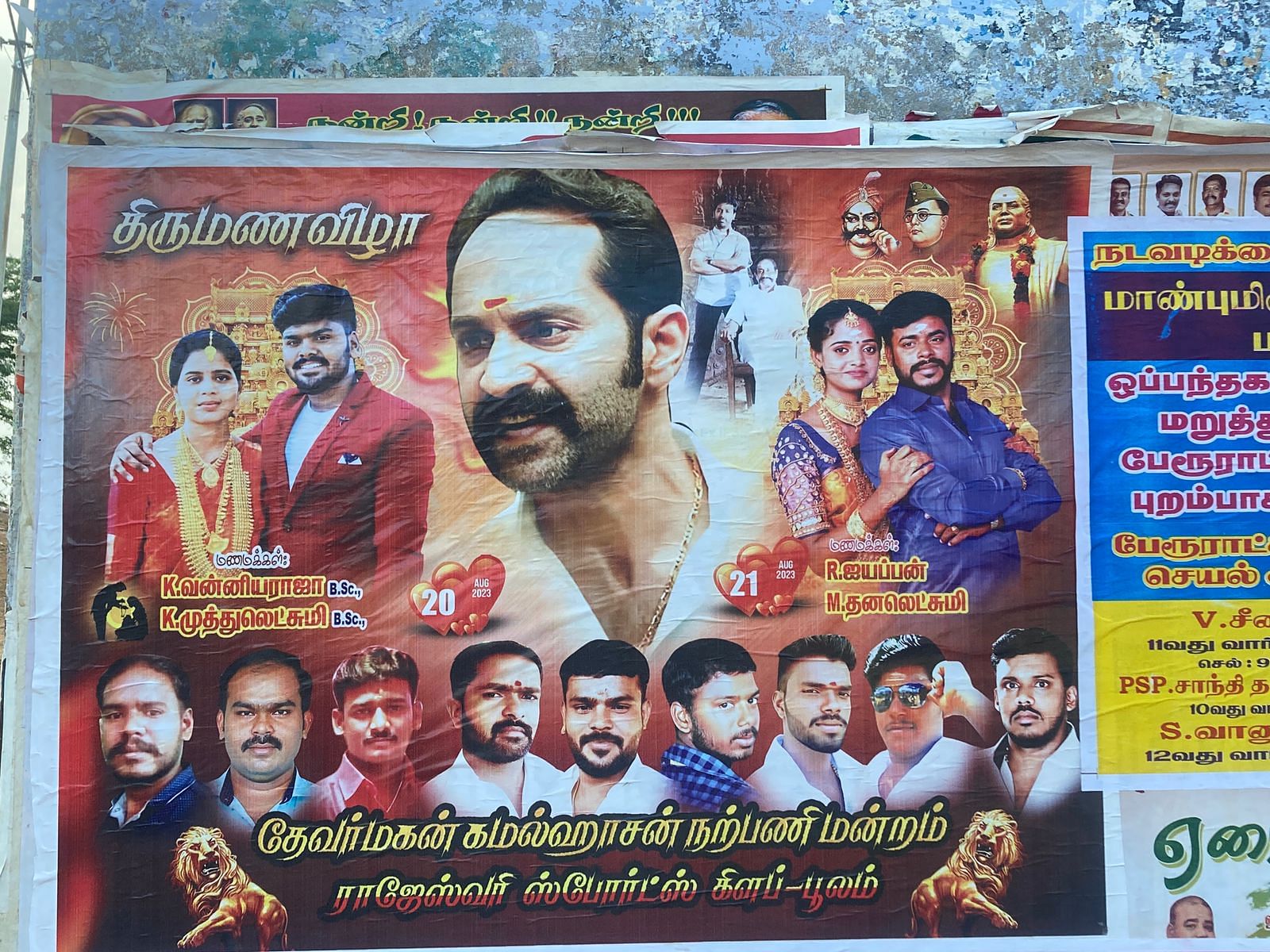
Maharaja says the Nanguneri case was a political conspiracy headed by the likes of Thirumavalavan and Mari Selvaraj, the Dalit filmmaker behind Maamannan. He denies the Nanguneri case as that of caste-pride, dismissing the accused student writing “Thevar Devam” in the jail cell as schoolboy playfulness. A kabaddi team exists in Nanguneri, with Dalit members. If there was truly a caste problem, asks Maharaja, would this team be intermingling and touching each other?
“I strongly oppose the incident. Everyone from Nanguneri is supporting the victim — we don’t support lawbreakers, and the accused should be punished,” he said. “Counselling is necessary for all. Teachers should be more involved. But this is not a caste problem.”
The parents of the accused also cited the film Maamannan as a possible influence on their kids. “The message of the film is to hit back and retaliate, I think,” said Papa. “Our community is also angry at the film because it does not show the reality.”
Seeing urban and rural Dalits on the silver screen is making many dominant caste communities uncomfortable, including how they are depicted, according to Dr Raj. “The new norm in the cinematic space challenges this domination,” he said.
Since the Nanguneri attack, a story involving Ambikapathi and the teenager has been doing the rounds, repeated by nearly every dominant-caste Thevar. A few years ago, Ambikapathi — who works as a “coolie” labourer and Anganwadi worker — was cleaning the waste after a Thevar wedding, where she had taken her son along to help. As per the accounts, a Thevar leader scolded her for making her son do such work and invited him to sit and eat with them.
This story was cited multiple times as evidence that the Thevars could not have been casteist towards Ambikapathi and her son. As it turns out, the leader who scolded her was an anti-caste activist and a member of the CPI.
“Did the parents of the accused say that this was not about community?” asked Vanumamallai, a local Jaya TV reporter, who is also a Thevar and belongs to Nanguneri — and nephew of the aforementioned CPI leader. “They’re lying,” he added.
Fixing what’s broken will take time
Tirunelveli is soaked in blood of caste crimes.
And it’s influencing the children, who say they have an important cause to uphold. Fights between OBCs and Dalits are deeply embedded in the district’s DNA, exacerbated by the expression of caste pride.
But the administration is working hard on fixing the issue at the school level: the government has planned to conduct separate events for students and teachers to identify issues of caste discrimination, and constitute robust school management committees. The district administration has also shortlisted some schools and recruited influential alumni and leaders to educate teachers, parents, and students. A model called Happy Schooling is also being implemented — although the administration is steering clear of making the children play contact sports in case that leads to more violence.
As caste tensions run high, a police team has been stationed outside the victim’s colony in Peruntheru, and the family has been guaranteed protection. The parents of the accused want protection too. Meanwhile, sources in the police and on the juvenile justice board confirm that the accused boys are in fairly good spirits.
Back at the hospital, the teenager and his sister are fending off a constant stream of visitors—politicians, journalists, local leaders. Their home is still bloodstained, but both children’s faces light up when they see pictures of their school.
When the PUCL fact-finding team went to collect the children’s testimony, they were taken aback by one statement. The victim’s sister used the words munnu annanga vettitanga — three annas cut us.
The fact that she, a Dalit, called her dominant caste attackers anna — a commonly used marker of respect — wasn’t lost on anybody.
But in Tirunelveli, such caste violence is part and parcel of life — the Nanguneri incident is shocking because of its viciousness and the fact that it was perpetrated by teenagers. It’s just another attack that has highlighted caste divisions in a violent manner, similar to a 2021 incident.
Now our sons’ lives are also ruined. They too need government support to come out of this – Papa, mother of the main accused
That year, after a bout of violence, a Dalit man named Muthu Mano was beaten to death in the district jail. He had been arrested for an attempted murder case involving someone from a dominant caste. When Mano’s body was collected for burial, an arival (billhook) was found placed next to it — a symbol that his death would be avenged, and the caste war would continue.
(Edited by Prashant)


